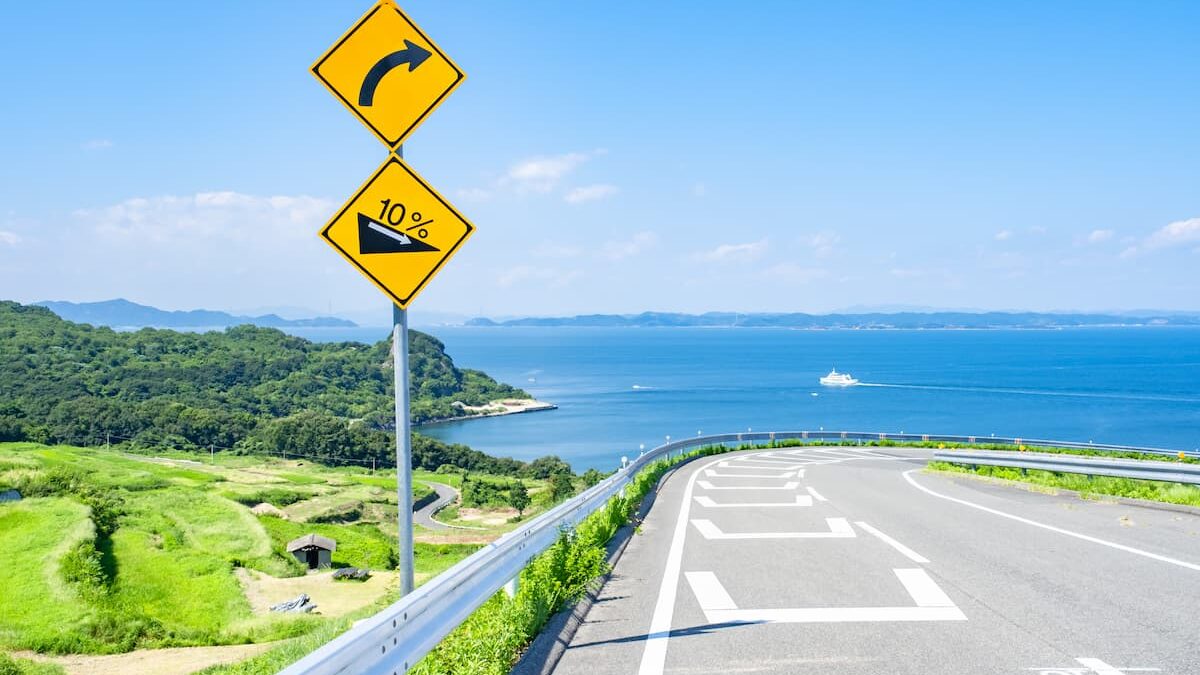In recent years, the number of people coming to Japan from overseas to sightsee by rental car has increased dramatically.
Along with this, the number of traffic violations and car accidents has also increased exponentially. One of the reasons for this may be the Japanese road signs, which are difficult for foreigners to understand.
I’m from Yamaguchi Prefecture, but I went to a driving school in Hiroshima, the neighboring prefecture, and got my driver’s license about a year ago. Since I’m from the countryside, it was my first time driving on roads with heavy traffic and in unfamiliar areas, and I remember feeling very scared.
I like driving a car, so I want foreigners to be able to enjoy driving safely in Japan too.
In this post, I’d like to introduce some Japanese road signs that I think foreigners should know about.
Japanese road signs that are difficult for foreigners to understand
止まれ (Tomare) (Stop)
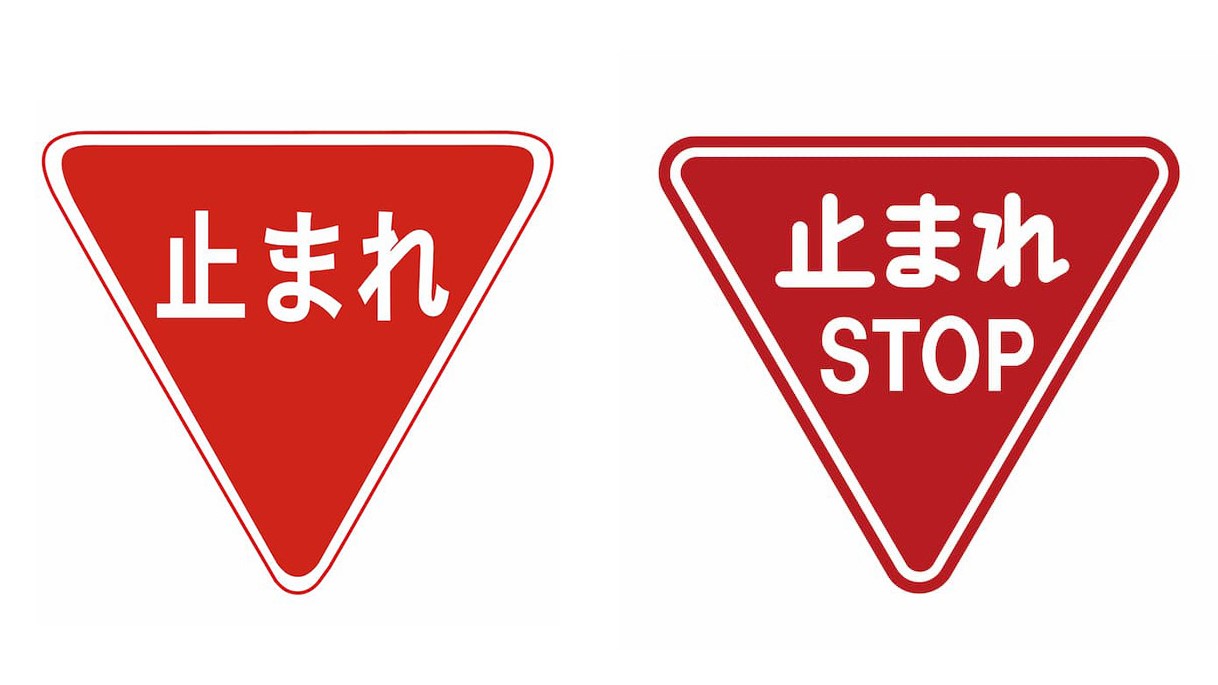
It is said that this is the sign that foreigners are most likely to misunderstand when driving in Japan. While the octagon is generally used for “Stop” sign worldwide, in Japan it is this inverted triangle. Also, from 2017 onwards, “STOP” has been written in English below “止まれ”, but you need to be careful because older signs only have Japanese written on them.
徐行 (Jokou) (Slow)
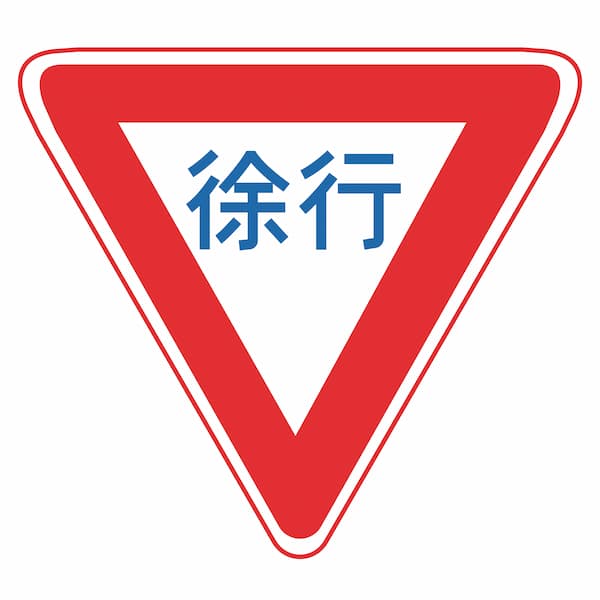
This is another sign that is often misunderstood by foreigners. In other countries, this type of sign generally means “yield”, but in Japan it means “slow”. Please drive at a speed that allows you to stop your car immediately (10km/h or less).
Japanese auxiliary signs
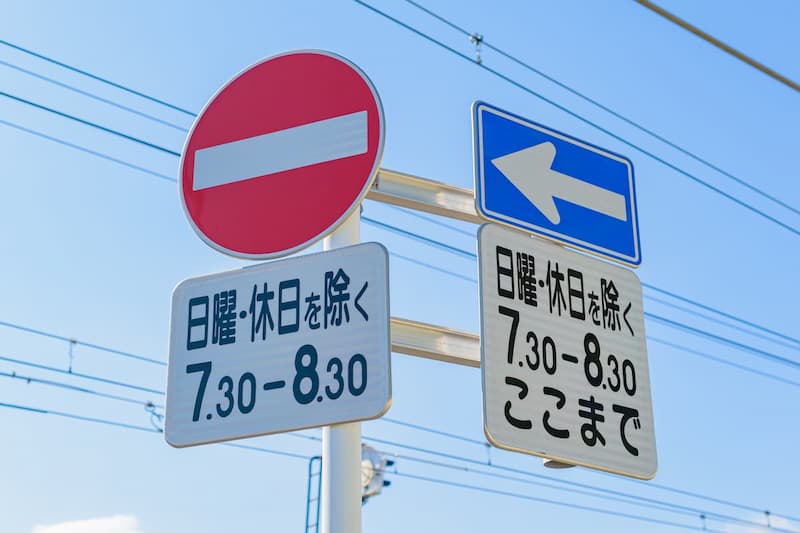
Sometimes there are signs with written text attached underneath road signs. These are called “auxiliary signs”. Auxiliary signs complement the main signs above them, and as they are written in Japanese or numbers, they may be difficult for people from overseas to understand.
For example, on the left in the photo above, the main sign says “No Entry for Vehicles” and the auxiliary sign says “7:30 a.m.-8:30 a.m. except Sundays and holidays”. This means “Vehicles cannot enter beyond this sign from 7:30 a.m. to 8:30 a.m. except Sundays and holidays”. This means that it is a violation to drive beyond this sign from 7:30 a.m. to 8:30 a.m. Monday through Saturday, except for holidays.
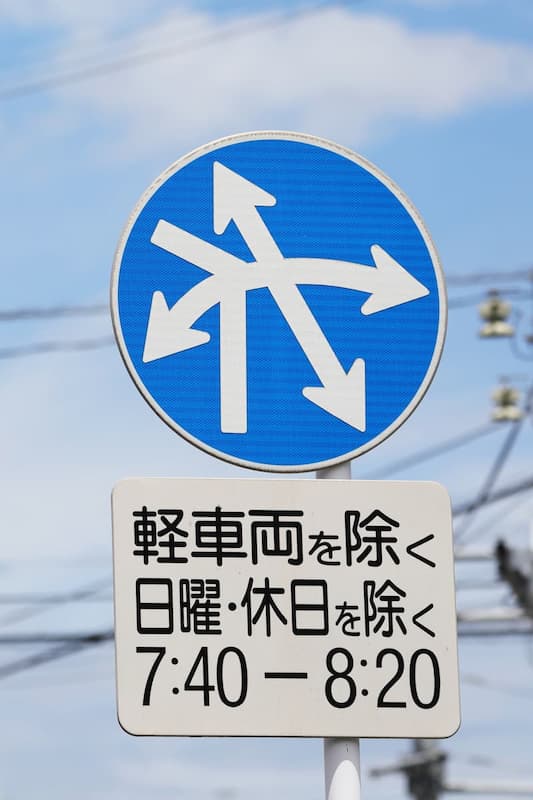
This is difficult to understand even for Japanese people, like a magic spell.
Diamond marks on the road
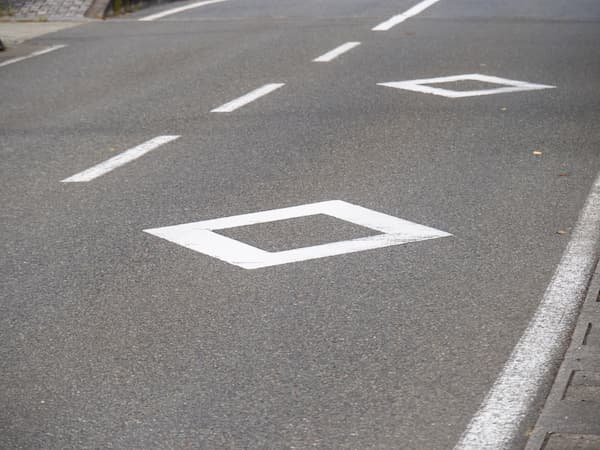
These marks indicate that there is a pedestrian or bicycle crossing ahead without traffic lights. This pattern is called a “diamond mark”. The “diamond mark” is set in two pieces, with the first one being 50 meters before the pedestrian crossing and the second one being 30 meters before. As there are no traffic lights, you may be tempted to forget to slow down, but when you see this mark, please slow down and give priority to the safety of pedestrians, etc.
Interesting Japanese Road Signs
Road Sign with Musical Notes
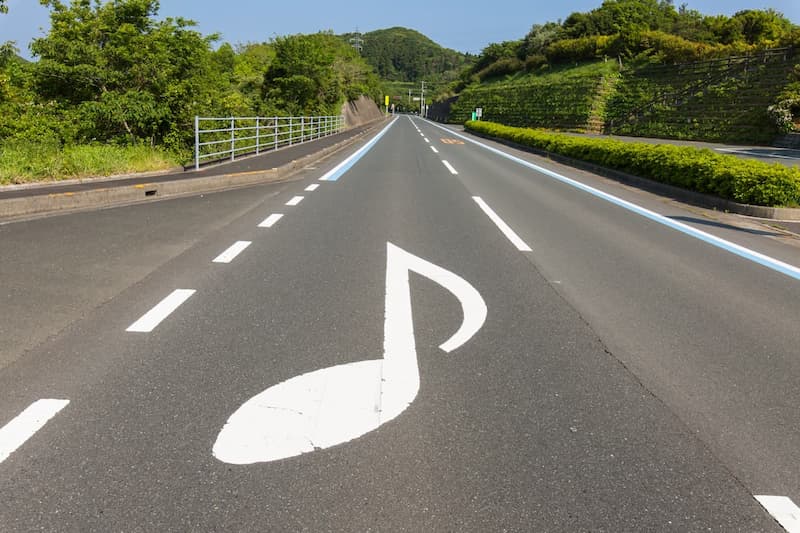
There is a musical note symbol in the middle of the road. This symbol was completed in February 2011, and it is designed so that music is played when the grooves in the asphalt rub against the car tires. While driving on this road, you can enjoy the song “Mikan no Hana Saku Oka” (The Hill Where the Orange Blossoms).
この先 海 (Kono saki umi) (Sea ahead)
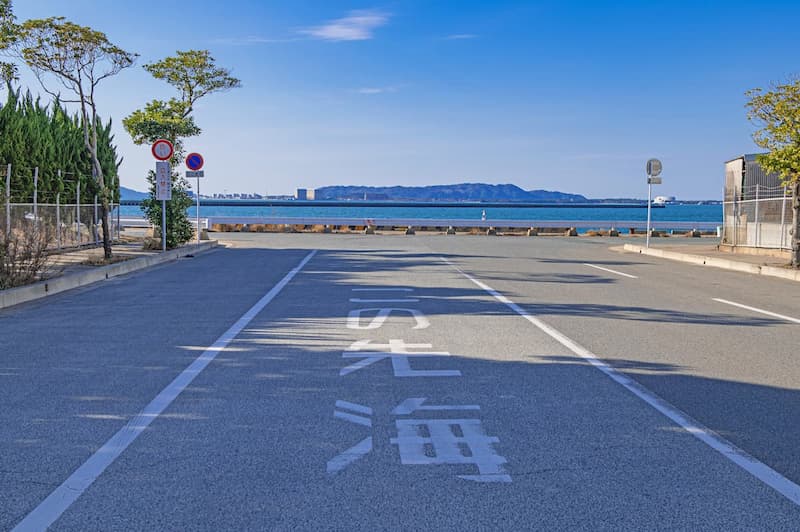
The road is marked with the words “この先 海 (Sea ahead)”. There is no embankment at the end of the road, so this is a warning to drivers not to drive straight ahead and hit the crash barrier or fall into the sea. It also goes well with the sunset, so it might be a good place to stop by when you’re sightseeing in Fukuoka.
Beware of ghosts? The “!” sign
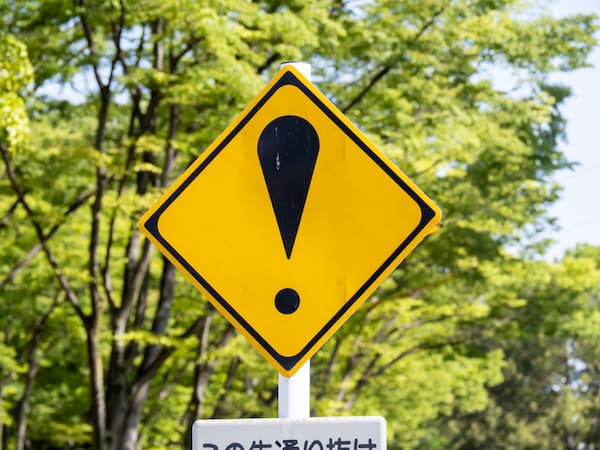

The yellow diamond-shaped sign is called a “warning sign”.
Warning signs are used to warn drivers of falling rocks, road narrows, traffic lights, and animals crossing the road, etc., but the exclamation mark indicates “other dangers” besides these. Most of these signs have auxiliary signs below them that explain what the driver should be careful of, but some signs don’t have these signs.
Rumor has it that this means “beware of ghosts”, but I don’t know if it’s true. However, the instructor at the driving school I attended also said “It’s a sign to beware of ghosts!”
How did you find the story about road signs in Japan?
Please follow the road signs and have a safe and enjoyable drive to make wonderful memories of Japan!

